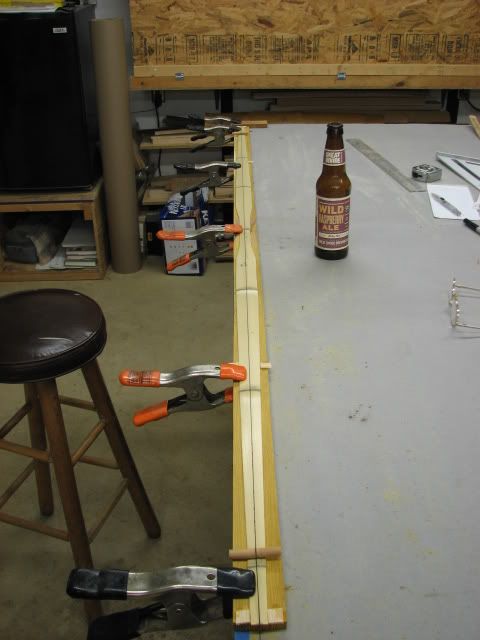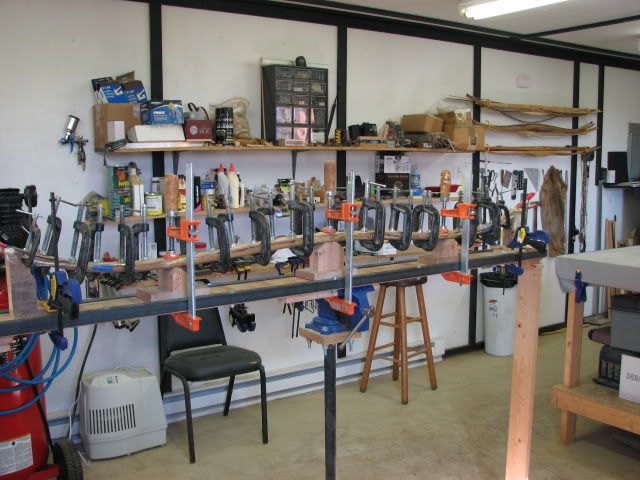I use a jointer set at 1/8th inch cut to thin the boo down to a flat surface on the belly side. Jointers are very dangerous and will remove fingers in the blink of an eye. I use the push blocks to control the boo as I work it down. Once the belly side is flat I trace my bow pattern onto it and cut that out on a bandsaw. Then I thin the boo down to 1/8 th thick at the handle and taper it to 1/16th thick at the tips. I do this on a belt sander, and again I use push blocks to control the boo. I try to get the boo to a butter knife edge along the sides. Also if there are any thinner spots on the back of the boo, I am real careful not to make that area too thin.
One tip here Justin, if you look at the nodes on the boo, you will notice that the space between them gets longer compared to one end to the other end. You want the end with the nodes closer together to be your bottom limb. You will also have to align the boo on your pattern and you will either have a node centered in the handle or a node equaly spaced one way or the other at your flares. You can slide the boo one way or the other to decide, then mark the exact center of the boo with the exact center of your pattern. Then trim off the ends of the boo to match the pattern, leaving yourself an extra 1/4 inch to play with.
Once your bow pattern is cut out of the boo, center it on your slat and run a tight string down the center of the boo to keep it straight. I measure from the string to both side edges of the boo all along the bow to get it perfectly straight. Clamp the boo down on the slat and then cut little thin blocks of wood and glue them along the sides of the boo to hold it straight when you glue it up like below.

When you glue up the bow, be sure to place padding between the clamps and back of boo and also on the belly side of the wood. This protects the boo and wood from getting crimped from the pressure of the clamps. A thin piece of wood will suffice. The boo is the most critical so protect it well, otherwise the clamps will cause damage and cause it to splinter later on in the tillering process.












